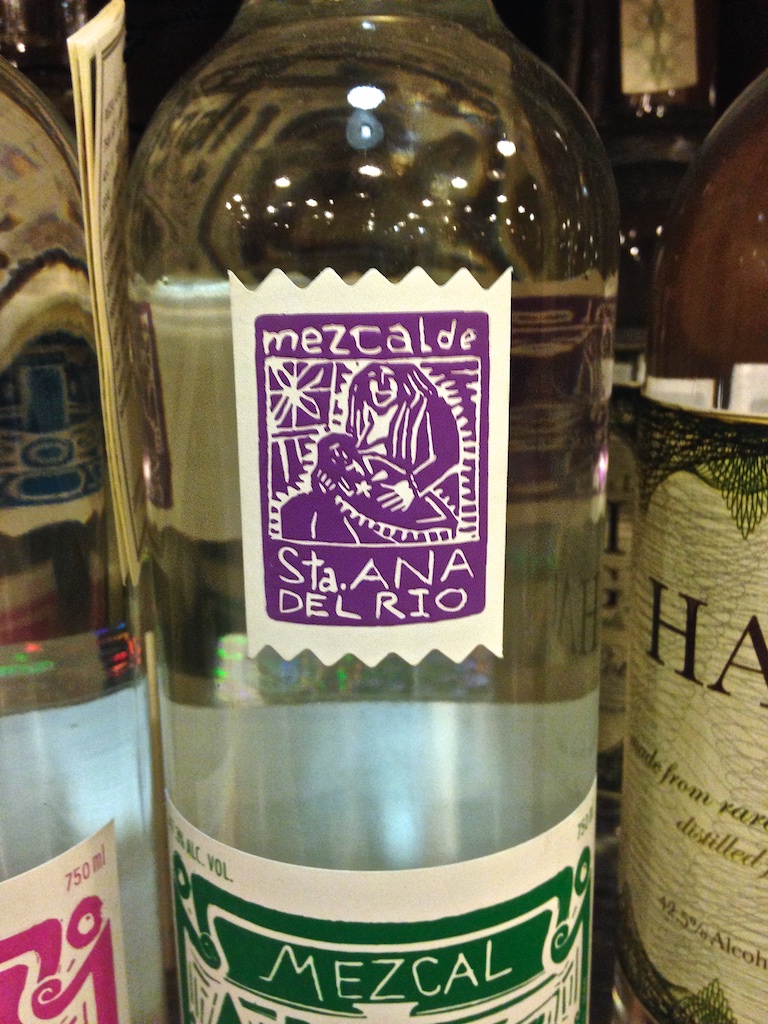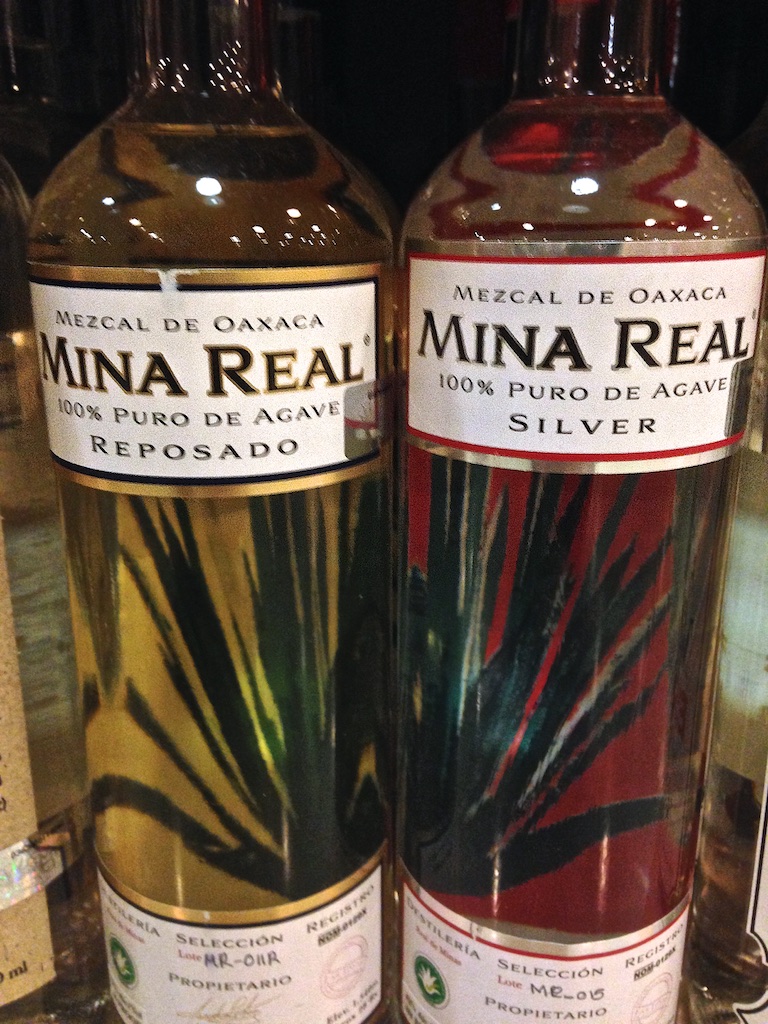Oaxaca/Mezcal Overview

Like I mentioned in the blog post about Italy the other day, I hear all this talk about a big agave spirits awakening, but I see very little action when it comes to sales. Sure, our tequila and mezcal sales are better than they've ever been, but that's mostly because we've been finding better tequilas and mezcales to recommend! I don't think our success here in the spirits department is based on a global trend or a new interest in Mexican spirits. I think it's mostly a testament to our hard work (and we have to work ten times as hard to sell one bottle of mezcal as we do a bottle of whiskey). But that's not to say that mezcal as a category isn't in a better place than it's ever been previously. At no time ever has the selection of available agave spirits been as diverse, with as many interesting selections of a high quality, as it is right now. Mezcal specifically, however, isn't as easy to wrap your head around as tequila is. It can be classified in a number of different ways and the hierarchy of price rarely correlates to an obvious level of quality. That being said, Oaxaca is the new wild west of the spirits world because in no other one location are as many producers making so many different versions of what is ultimately categorized as one single type of distillate: mezcal. It's that unruly freedom and the intense, unbridled character of the spirit that interests the most geeky of all spirits geeks. But it's that potential for supreme order and balance amidst the most savage of all flavors that has me heading south once again for my second trip to the region.
Many people consider Bourbon to be the rugged, blue-collar American cousin of Scottish single malt. It's bigger, bolder, and more powerful than the refined and softer flavors of mainstream Scotch whisky. You could also say the same thing about Armagnac in comparison to Cognac, and mezcal in comparison to Tequila. But if Armagnac is the backwoods stepchild of Cognac, then mezcal would be Tequila's hippy-dippy brother who ran off to follow the Dead on tour and pop LSD every night while dancing around a bonfire in the wilderness. It's the wildest, and wackiest of all major spirits, and it adheres to few particular rules or regulations concerning how it can be made, or what it can be made from. There are clear and obvious distinctions between Bourbon and Scotch. They're made on two different types of stills, from two completely different grains, and they're aged in different types of oak barrels, yet they're both considered types of whiskey. Cognac and Armagnac vary in much the same way (both from grapes, but different varietals), but they're both considered brandies. Tequila must be made from one type of agave only: agave azul (or blue agave). It's almost always distilled twice in a pot still, much like Scotch and Cognac, and almost all of the production takes place in the state of Jalisco. Mezcal on the other hand can be made from dozens of different types of agave, on a number of different types of still (some made from clay pots). It can be made in eight different Mexican states, from processes that vary from front to back in almost every major way, but most of it comes from Oaxaca and most of it is made from a species called Espadin. That's the ordinary stuff. However, it's the increasing amount of unique artisan production that really excites you to your inner core as a spirits drinker (or makes your head hurt trying to comprehend it).
So how is mezcal organized? In a number of different ways, which is what makes it complicated. Producers are free to categorize as they see fit. Let's look at a few iPhone pics I snapped today:

By varietal: Just like some wines are labeled as Cabernet Sauvignon, and others as Merlot, there are mezcales that are labeled by the species of agave used to produce that particular spirit. Sometimes this can be a simple Espadin distinction (a species that can be cultivated and farmed in the region), while at other times it might be something like Madre Cuixe or Tepextate—rare and wild species of agave that must be foraged by hand. The rarer and more exotic the species of agave, the more expensive the price (it's like truffles). The most recent batch of Mezcalero #10 was made from Sierra Negra, which isn't a type of agave I've often seen used (but is absolutely delicious).

By village: Just like the French label their most-famous Bordeaux and Burgundy wines by commune or village, some producers of mezcal choose to label their spirits as San Juan del Rio or Chichicapa. It's assumed that certain regions have traditional ways of making their spirits, so by marketing the name of a specific village the consumer can come to expect a certain style or level of quality in the product. Alipus does a number of different mezcales under this moniker, including the Santa Ana del Rio seen in the photo above.

As an Ensemble: Just like we have "claret" or "Super Tuscans" in the wine world, which refer to specific types of blended varietals in the cepage, many producers like to create blends of different agave distillates. These are usually labeled as "Ensemble" and often will include the specific species of agave used in the blend. In the case of Bruxo's #4, we have Espadin, Barril, and Cuishe being utilized to create a harmony of mezcal flavor.

Like Tequila: If it ain't broke, don't try and fix it. Since most customers are used to silver or blanco, reposado, and anejo Tequila, then why not use the same distinctions for mezcal? Both Mina Real and Los Nahuales utilize the classic Jalisco tradition for their mezcales.

By speciality: You know how your family has that old secret recipe for a punch bowl, or for your grandmother's spaghetti sauce? Many Mexican distillers have similar traditions for creating specific specialities of mezcal. You'll often see the word "pechuga" on a mezcal label (which means breast in Spanish), meaning the mezcal was macerated with a raw chicken or turkey breast before bottling (it's actually delicious). In the case of Mezcal Vago, they have an expression called "elote" (corn) that was macerated with toasted corn for a richer and creamier flavor. Other mezcales might be flavored with fruits, nuts, or other forms of roasted animal.

Simply by producer: What about the old fashioned way? The name of a brand, pure and simple. Fidencio's Clasico is just a no-frills, straight-forward, deliciously-smoky mezcal.
OK! Now you've got it! You can take all of this information and begin classifying and organizing the expanding-world of mezcal into structured and orderly little groups of knowledge and understanding!
Except you can't.
Why? Because even within these sub-groups there is still a huge amount of variance. Let's say you've got two mezcales and both of the bottles say "Espadin". All that tells you is the type of agave used. What it doesn't tell you, however, is how the spirit was made. Were the agave pinas baked, roasted, or steamed? Depending on how the hearts were cooked the flavors can be wildly different from one another. What type of still was used in the distillation? A clay pot? A stainless steel pot? A copper still? Or maybe a little backyard mechanism using some left over scrap metal from the local pick-and-pull. What am I saying? I'm saying you can't know anything about how any bottle of mezcal will ultimately taste unless you know everything about the production process (or you've tasted that specific mezcal before). But who has time to figure all that shit out??!! Nobody. That's why they pay me the big bucks. To figure all this shit out for you. It's not unlike France's Burgundy region. You think you can summarize that region by some blanket statement vintage report? PLEEEEASE. Every vineyard has its own microclimate, let alone commune, and it's exactly that ridiculous amount of requisite expertise required to understand these wines that makes Burgundy the most intimidating of all wine regions for people in the field. If I had to find a distilled comparison, I'd say mezcal is easily the Burgundy of the spirits world. Try and summarize it all you want. It can't be done.
But we'll see what I can do to help make your appreciation of it less daunting. It's worth the effort, folks.
-David Driscoll
